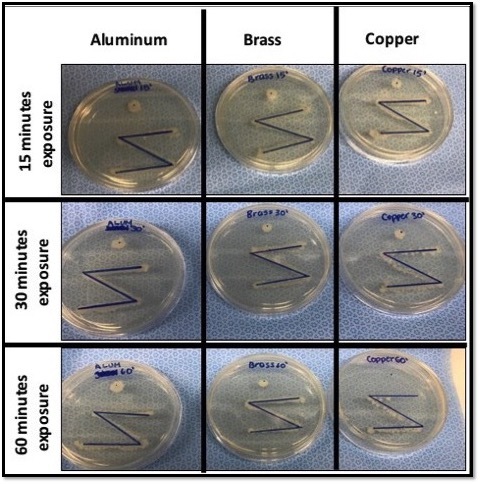Antibacterial Effects of Copper Surfaces
(1) Sewickley Academy High School, Sewickley, Pennsylvania
https://doi.org/10.59720/19-130
Healthcare-associated infections (HAIs) are a major problem affecting 2 million people and cost $30 billion annually. However, most HAIs are preventable. Ancient civilizations used copper to help purify water and treat wounds. During the cholera epidemic, copper workers were not as affected which suggests that copper might be a bacteria-fighting element. This study examines the ability of copper and copper alloy surfaces to inhibit bacterial growth. We developed three operating hypotheses. First, copper surfaces will inhibit bacterial growth more than aluminum. Second, a copper alloy surface, brass, will inhibit the growth of bacteria more than aluminum but to a lesser extent than copper. Third, the longer the bacteria are in contact with a copper or brass surface, the greater the extent of inhibition of bacterial growth. Two non-pathogenic strains of bacteria, Escherichia coli (E. coli) and Staphylococcus epidermidis (S. epidermidis), were exposed to different metal plates, copper, brass, and aluminum, for varying degrees of time. The bacteria were then transferred to an agar plate to allow the bacteria to grow. Copper surfaces significantly inhibited the growth of E. coli and S. epidermidis more than the aluminum surfaces. Brass significantly inhibited the growth of bacteria more than aluminum, but to a lesser extent than copper. The longer the bacteria were in contact with brass or copper, the greater the extent of inhibition of bacterial growth. Overall, copper, and to some extent brass, may be good options to help prevent bacterial growth and to prevent HAIs in healthcare settings.
This article has been tagged with: